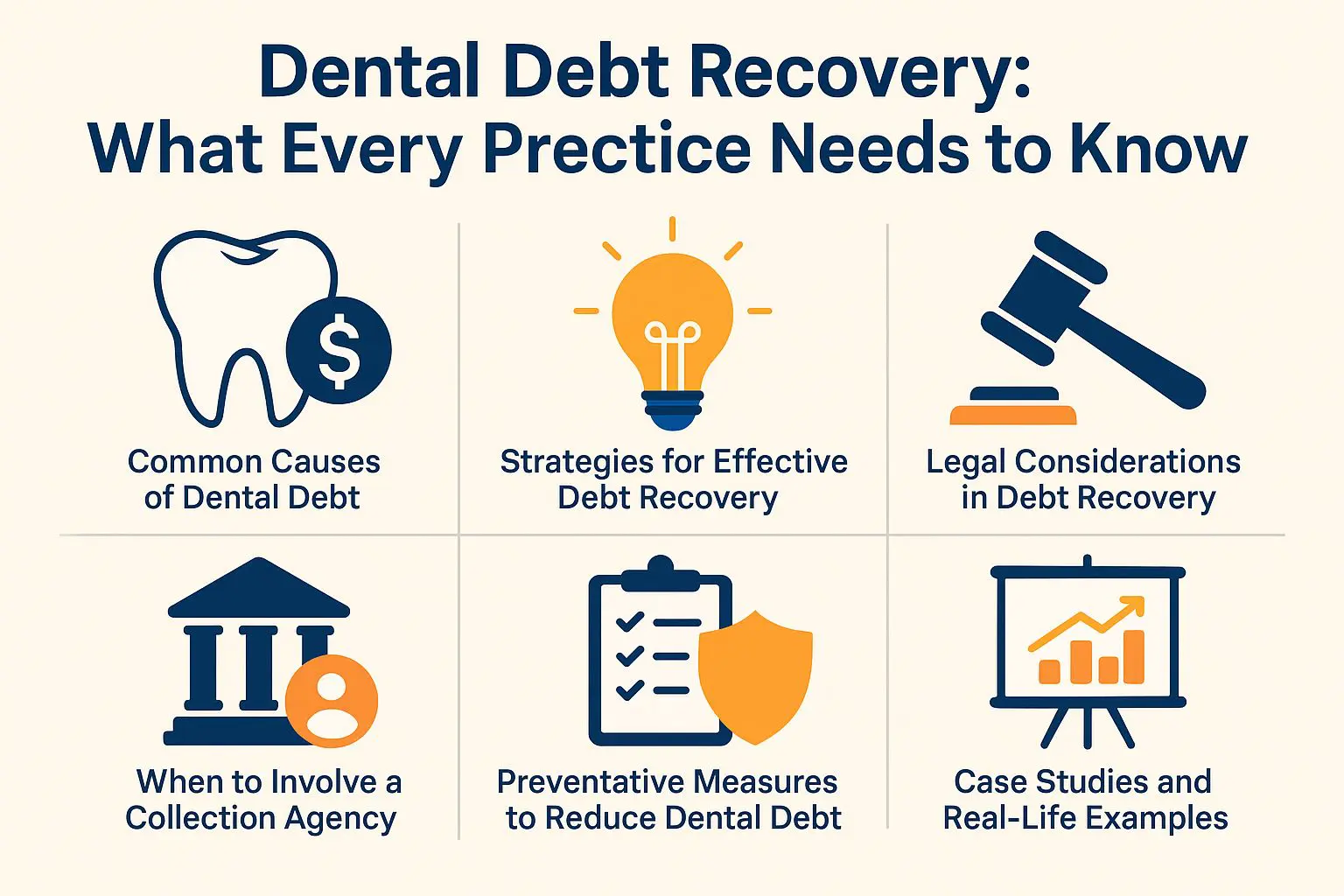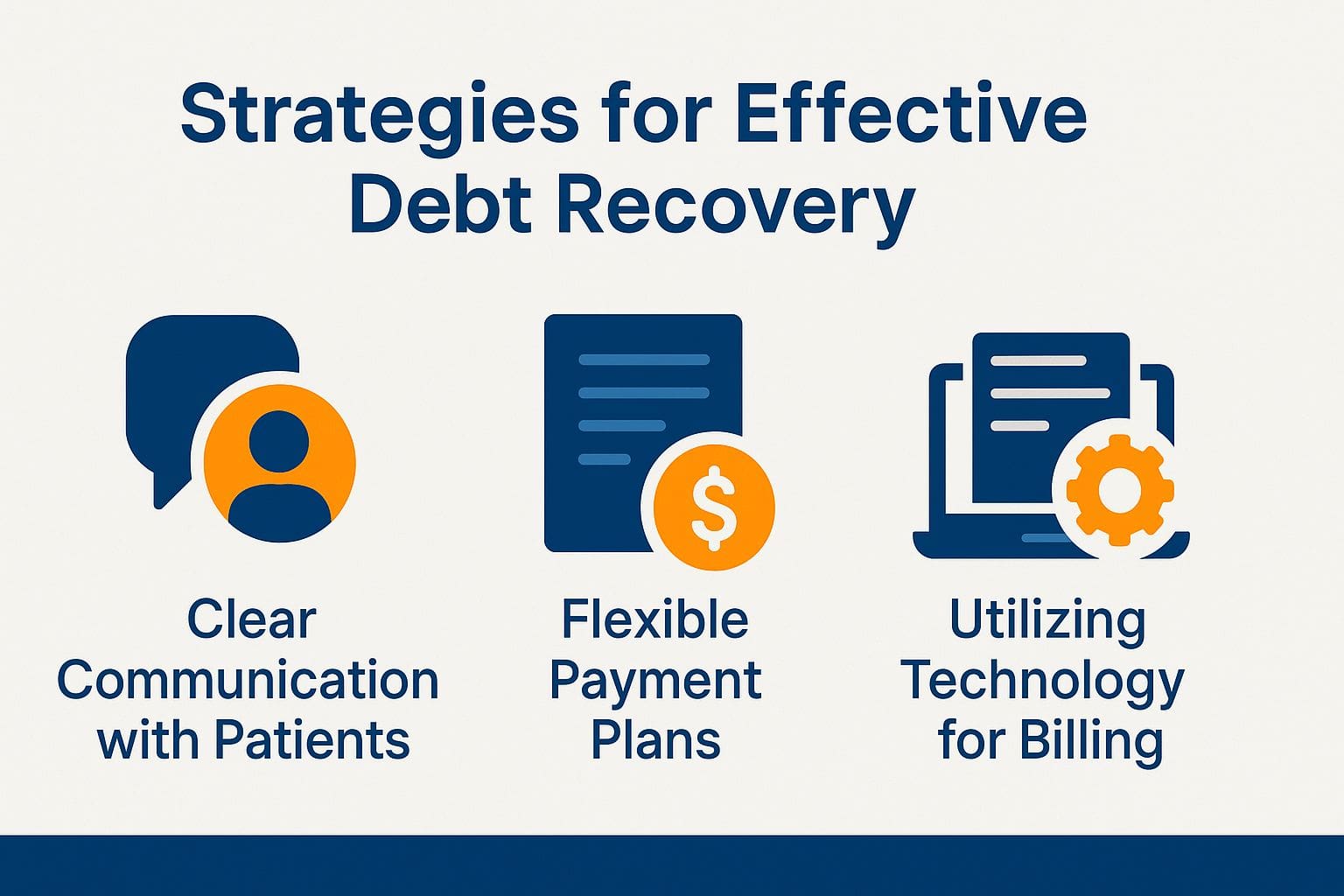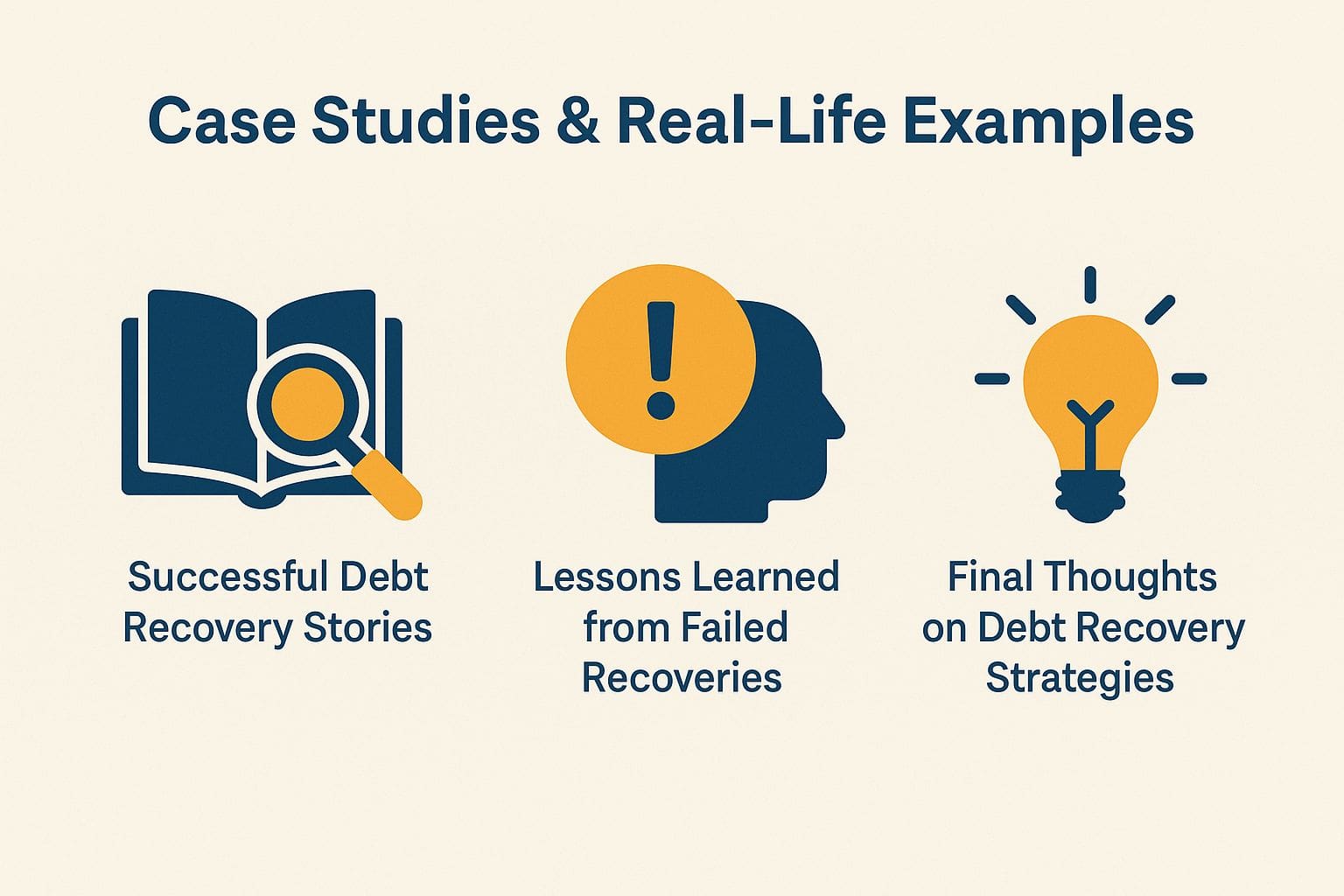
Dental Debt Recovery: What Every Practice Needs to Know
Dental debt recovery can feel overwhelming, but it doesn’t have to define your practice. Knowing the origins of this problem is important for your money well-being. This article discusses typical reasons for dental debt, ways to get out of it, and important legal aspects to consider. Also, learn when to hire a collection agency and ways to avoid debt. Prepare to face this challenge directly and improve your practice’s success!
Understanding Dental Debt
Dental debt arises from various factors, including unpaid patient bills, insurance claim denials, and billing errors, affecting the practice’s cash flow.
To mitigate these issues, practices can implement clear communication strategies with patients regarding payment expectations and improve accounts receivable management.
Programs like Dentrix or Open Dental can make billing easier, improve the features of practice management software, and reduce errors in dental offices.
Establishing a follow-up system for overdue accounts can significantly improve collections and patient engagement-consider sending reminder emails or texts at 30, 60, and 90 days post-service.
Statistics show that practices with these systems in place see a 30% decrease in overdue accounts, enhancing overall financial health.
The Importance of Debt Recovery
Effective debt recovery can increase a dental practice’s revenue cycle by up to 30%, directly enhancing financial stability and credit management.
To improve debt recovery, practices should follow an organized method. First, look at how you handle billing. You can set up automatic notifications using programs such as Dentrix or Open Dental. This can lower late payments by 20%.
Next, teach your employees good communication skills to interact with patients respectfully, as personal contact can greatly increase collection rates. Monitor performance metrics regularly, focusing on the average collection rate, which stands at 95% for practices employing these strategies.
By actively refining these aspects, practices can substantially improve their financial health and practice sustainability.
Common Causes of Dental Debt
Knowing why dental debt happens is important for creating ways to recover money and increasing the cash flow of a dental practice.

Patient Non-Payment
Patient non-payment is a leading cause of dental debt, with studies showing that 25% of patients do not pay their bills on time.
Many patients may be unaware of their payment options, leading to delayed payments. To mitigate this, dental practices can implement clear communication strategies.
For instance, providing detailed statements that outline payment plans helps patients understand their obligations. With CareCredit, patients can pay for their dental treatments over time, making it simpler to manage expenses.
Sending gentle notices through email or text about upcoming payments can encourage paying on time. A combination of awareness and accessible payment methods can significantly reduce non-payment rates.
Insurance Claim Denials
Insurance claim denials can significantly hinder a practice’s financial health, with an average denial rate of 5-10% across dental practices.
Claims are often denied due to problems such as wrong coding, confusion about patient eligibility, and missing pre-approval. To solve these issues, dental offices should use modern methods.
- First, make sure coding is done correctly by frequently teaching staff the newest codes and using software like ADA Code Check.
- Second, verify patient insurance details before appointments to confirm coverage.
- Set up a strong pre-authorization process for treatments that need approval, reducing unexpected denials and keeping cash flow steady.
Billing Errors
Billing mistakes make up about 15% of unpaid bills in dental offices, showing the importance of correct billing procedures.
Common billing errors include:
- Incorrect codes
- Duplicate charges
- Misapplied payments
To reduce these problems, use trustworthy billing software like Dentrix or Open Dental, which automatically enters codes and highlights errors. For example, Dentrix offers a real-time audit feature that helps identify errors before submission, reducing adjustments.
Regular staff training on coding practices and periodic audits of billing processes can also improve accuracy. By creating a standardized procedure for checking invoices, practices can decrease error rates and improve revenue cycle management.
Strategies for Effective Debt Recovery
Collecting debts effectively is important for improving cash flow and keeping dental practices financially stable in the long run. If interested, learning about the latest advancements in medical billing software costs can provide additional insights into optimizing financial processes.

Clear Communication with Patients
Clear communication can raise patient payment rates by 20%. This helps build trust and encourages payments on time.
To put this plan into action, begin by sending individual payment notices well before the deadline.
For example, use an email template like, “Hi [Patient’s Name], this is a friendly reminder that your payment of [Amount] is due on [Date]. We appreciate your timely attention to this matter!”
Including SMS notifications can be effective. You might send a text saying, “Don’t forget: Your payment is due on [Date]. Thank you for choosing us!”
Using tools like Mailchimp for emails and SimpleTexting for text messages can make your work easier and keep things professional.
Flexible Payment Plans
Offering flexible payment plans can increase recovery rates by up to 30%, allowing patients to manage their financial responsibilities better.
To implement a payment plan effectively, first assess your patients’ financial needs through a brief survey. Tools like CareCredit can help you establish interest-free financing options.
Next, set clear guidelines on the plan duration and payment frequency-monthly installments often work best. For example, consider offering a 12-month plan for larger bills.
Communicate the benefits of these plans during consultations, ensuring patients understand how they can maintain treatment continuity while managing costs. Doing something makes people trust you and encourages commitment.
Utilizing Technology for Billing
Using modern billing technology can reduce billing errors by 50% and make operations more efficient in dental offices.
Tools like QuickBooks and Zocdoc make billing easier by handling invoicing and payment collection automatically. For instance, QuickBooks provides real-time tracking of payments, helping practices monitor outstanding invoices effortlessly.
Simultaneously, Zocdoc improves how patients feel by allowing them to pay online, which helps cut down on missed appointments and overdue payments. Using these tools together helps collect payments on time and keep records correct, saving practices time and money.
By using automatic systems and making processes easier for patients, dental offices can greatly improve their financial position.
Legal Considerations in Debt Recovery
Knowing legal issues is important for ethical debt collection and following rules that protect patient rights.
Knowing Fair Debt Collection Practices
The Fair Debt Collection Practices Act (FDCPA) outlines essential guidelines, ensuring ethical treatment of patients during collections.
Dental practices must adhere to the FDCPA to avoid legal repercussions. This includes communicating with patients respectfully and avoiding harassment.
Dentists should restrict communication to reasonable times and avoid using intimidation. Using tools like automatic billing systems can simplify communication and make sure rules are followed.
Teaching staff how to collect information ethically is essential. Using checklists can help all employees know the rules, leading to a uniform method for handling patient accounts.
This keeps the practice legally safe and builds trust with patients.
State-Specific Regulations
Every state has different rules for collecting debts, which makes it hard for dental offices to handle this process.
For example, in California, debt collectors must adhere to regulations that allow debtors to dispute debts in writing within 30 days, while Florida requires collectors to provide detailed account statements upon request.
Dental offices should regularly check state laws and make a checklist to stay compliant.
Using tools like Compliance Counsel or consulting with a legal expert can help simplify this process, keeping your practice up-to-date with the varied requirements across states.
When to Involve a Collection Agency
Knowing when to hire a collection agency can help you get back money from unpaid bills and make debt collection more effective. For the best results, consider working with one of the top debt collection agencies in 2023.
Criteria for Referral
Criteria for referring accounts to a collection agency include outstanding balances over $100 and being 90+ days overdue.
Plus these basic criteria, consider the account’s payment history and communication attempts. If you’ve made at least three attempts to collect the debt via phone or email without success, it may be prudent to refer the account sooner.
Evaluate the type of debt; for example, medical debts might require more patience compared to retail credit card debts.
Using a debt collection management system can help track these activities and make your decision-making process easier, ensuring accounts are sent quickly to minimize losses.
Choosing the Right Collection Agency
Choosing the right collection agency can improve recovery rates and protect your practice’s reputation and patient relationships.
To choose an effective collection agency, consider their industry experience, especially in healthcare for dental debt recovery. Look for agencies that use ethical collection practices, ensuring collections compliance with regulations like the Fair Debt Collection Practices Act. Assess their service fees structure; some charge a percentage of recovered debt while others may have flat fees.
Trustworthy collection agencies often include:
- Enhanced Recovery Company: Known for its ethical collections approach and dedication to client relationships.
- Medical Revenue Services: Specializes in medical debts, focusing on patient-friendly collection methods.
- Buchanan Ingersoll & Rooney: Offers a complete set of services with a successful track record in healthcare.
Researching these factors can lead to better practice improvement outcomes.
Preventative Measures to Reduce Dental Debt
Acting early to avoid issues can significantly reduce the risk of dental expenses and support better money management.

Improving Patient Education and Financial Literacy
Educating patients about their financial responsibilities can reduce non-payment rates by up to 20%, improving patient billing outcomes.
To help patients understand better, think about providing brochures before appointments that explain estimated costs and payment choices.
Following the appointment, send detailed follow-up emails reiterating financial policies, payment policies, and timelines. Tools like Mailchimp can send these emails by themselves, making sure patients receive information promptly.
Hosting informational sessions or webinars can directly address questions and clarify patient communication and payment processes. This method encourages transparency, clarifying information and aiding patients in grasping their financial duties and patient discussions.
Streamlining Billing Processes for Practice Revenue
Streamlining billing processes can decrease the time spent on collections by 30%, enhancing practice revenue and allowing more focus on patient care.
To do this, try using invoicing systems such as FreshBooks or QuickBooks. These tools allow you to schedule recurring invoices, reducing manual entry errors.
Integrating a payment processor such as Stripe or PayPal can further speed up collections and payment processing by offering clients multiple payment options online.
Utilizing a unified dashboard to track practice revenue and follow up on overdue invoices can help maintain cash flow. This combination saves time and improves financial management, helping your business operations and practice succeed.
Case Studies and Real-Life Examples
Looking at real-world examples can show useful ways to recover debt and mistakes to watch out for in collections best practices.

Successful Debt Recovery Stories
One dental practice increased recovery rates by 40% after implementing transparent billing communication, patient outreach, and follow-up strategies.
They achieved this by adopting a three-step approach.
- First, they revamped their billing process, using clear language and itemized statements for improved patient communication to minimize confusion.
- Second, they used software like Dental Intelligence to send payment reminders to patients who still owe money.
- They trained employees to manage personal follow-ups, improving customer service and encouraging quick payments.
As a result, they saw higher recovery rates and much better patient satisfaction, showing the benefits of good communication and thorough follow-up practices.
Lessons Learned from Failed Recoveries
Looking at unsuccessful debt recovery attempts can teach important lessons in credit risk that help avoid mistakes and make practices better.
For instance, a company once pursued a hardline approach, employing aggressive collection strategies that alienated clients and tarnished their reputation.
Taking a more thoughtful approach, such as speaking directly with people who owe money and offering payment plans that fit their needs, was beneficial in another situation.
Key tools like collection management software, for example, Collect! Debtroute can improve collections processes and make these tasks easier.
Focusing on building relationships rather than making demands can lead to better outcomes, higher recovery rates, and increased patient retention and loyalty.
Final Thoughts on Debt Recovery Strategies
By focusing on practical ways to collect debts and keeping communication open, dental practices can improve their finances and build trust with patients, contributing to practice growth.
To put these strategies into practice, think about using billing software like QuickBooks or Dentrix to simplify how you handle invoices and manage accounts.
Set specific payment rules and frequently check in on unpaid bills with consistent notifications and collections analytics. Create a patient-friendly payment plan that accommodates their financial situation, considering patient demographics and financial counseling.
Regularly reviewing accounts receivable reports can help identify patterns of late payments, allowing practices to adjust their approaches for improved credit reporting and risk assessment.
Following these steps can improve cash flow and create stronger bonds with patients, leading to increased trust, loyalty, and patient satisfaction.
About The Author
Jordan Blake is a B2B strategist and contributor at Price It Here, where she shares expert advice on buying decisions and business growth. She holds a Bachelor’s in Business Administration from the University of Michigan and an MBA from Northwestern’s Kellogg School of Management.
With over a decade of experience in procurement and vendor strategy, Jordan helps businesses save money and scale smarter. Her practical insights make her a trusted voice for entrepreneurs seeking cost-effective, results-driven solutions.
